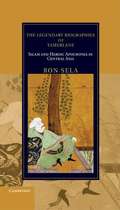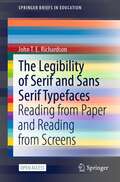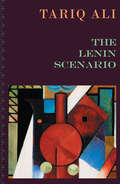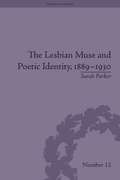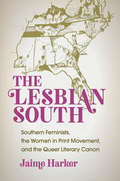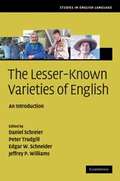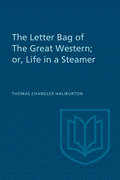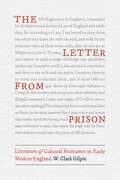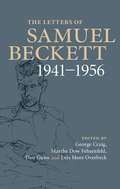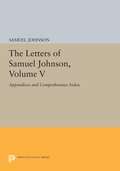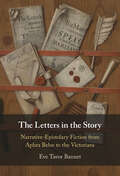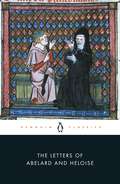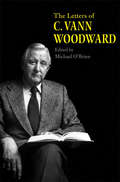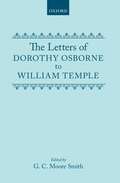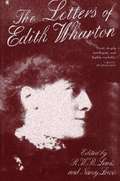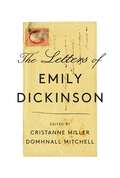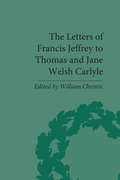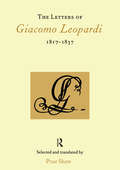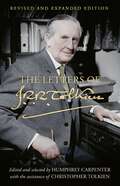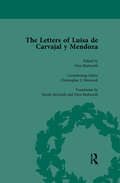- Table View
- List View
The Legendary Biographies of Tamerlane
by Ron SelaTimur (or Tamerlane) is famous as the fourteenth-century conqueror of much of Central Eurasia and the founder of the Timurid dynasty. His reputation lived on in his native lands and reappeared some three centuries after his death in the form of fictional biographies, authored anonymously in Persian and Turkic. These biographies have become part of popular culture. Despite a direct continuity in their production from the eighteenth century to the present, they remain virtually unknown to people outside the region. This remarkable and rigorous scholarly appraisal of the legendary biographies of Tamerlane is the first of its kind in any language. The book sheds light not only on the character of Tamerlane and how he was remembered and championed by many generations after his demise, but also on the era in which the biographies were written, and how they were conceived and received by the local populace during an age of crisis in their own history.
The Legends of the Saints in Old Norse-Icelandic Prose
by Kirsten WolfSaints' legends form a substantial portion of Old Norse-Icelandic literature, and can be found in more than four hundred manuscripts or fragments of manuscripts dating from shortly before the twelfth century to the 1700s. With The Legends of the Saints in Old Norse-Icelandic Prose, Kirsten Wolf has undertaken a complete revision of the fifty-year-old handlist The Lives of the Saints in Old Norse Prose. This updated handlist organizes saints' names, manuscripts, and editions of individual lives with references to the approximate dates of the manuscripts, as well as modern Icelandic editions and translations. Each entry concludes with secondary literature about the legend in question. These features combine to make The Legends of the Saints in Old Norse-Icelandic Prose an invaluable resource for scholars and students in the field.
The Legibility of Serif and Sans Serif Typefaces: Reading from Paper and Reading from Screens (SpringerBriefs in Education)
by John T. RichardsonThis open access book provides a detailed and up-to-date account of the relevant literature on the legibility of different kinds of typefaces, which goes back over 140 years in the case of reading from paper and more than 50 years in the case of reading from screens. It describes the origins of serif and sans serif styles in ancient inscriptions, their adoption in modern printing techniques, and their legibility in different situations and in different populations of readers. It also examines recent research on the legibility of serif and sans serif typefaces when used with internet browsers, smartphones and other hand-held devices. The book investigates the difference in the legibility of serif typefaces and sans serif typefaces when they are used to produce printed material or when they are used to present material on computer monitors or other screens and it explores the differences in readers’ preferences among typefaces. The book’s main focus is on the psychology of reading, but there are clear implications for education and publishing. Indeed, the book can be read with benefit by anyone concerned with communicating with others through written text, whether it is printed on paper or displayed on computer screens.
The Lenin Scenario
by Tariq AliThe revolutionary world leader&’s extraordinary life, published for the centenary of Lenin&’s deathCommissioned by Oliver Stone in 2015 to commemorate the Russian Revolution, Tariq Ali&’s captivating screenplay of the life and times of Vladimir Lenin puts flesh on the bones of the historical record and gets its pulse racing. From the author of The Dilemmas of Lenin, the drama captures the enigma of its central character. Ali shows Lenin in his rush from Switzerland to Petrograd by train to grasp his moment in history and the force of his personality on the tumult he found there. He made a revolution and remade a nation. Interwoven with the politics is an exploration of Lenin&’s personal life, especially his love for Inessa Armand.In the introduction, Ali argues that, despite the difficulties, a serious cinematic assessment of Lenin is still needed. Unfortunately, two very different attempts to film one failed. This first draft provides the basis for something on a grander scale at some stage in the future.Praise for The Dilemmas of Lenin &‘Aims to rescue Lenin from both liberal caricature and Soviet hag- iography by recovering the realism and dynamism of his political thought&’ David Sessions, Nation&‘An incredibly powerful, panoramic, and insightful study of the central revolutionary figure of the twentieth century&’ Paul LeBlanc, author of Lenin and the Revolutionary Party
The Lesbian Muse and Poetic Identity, 1889–1930 (Gender and Genre #12)
by Sarah ParkerThroughout history the poetic muse has tended to be (a passive) female and the poet male. This dynamic caused problems for late Victorian and twentieth-century women poets; how could the muse be reclaimed and moved on from the passive role of old? Parker looks at fin-de-siècle and modernist lyric poets to investigate how they overcame these challenges and identifies three key strategies: the reconfiguring of the muse as a contemporary instead of a historical/mythological figure; the muse as a male figure; and an interchangeable poet/muse relationship, granting agency to both.
The Lesbian South: Southern Feminists, the Women in Print Movement, and the Queer Literary Canon
by Jaime HarkerIn this book, Jaime Harker uncovers a largely forgotten literary renaissance in southern letters. Anchored by a constellation of southern women, the Women in Print movement grew from the queer union of women's liberation, civil rights activism, gay liberation, and print culture. Broadly influential from the 1970s through the 1990s, the Women in Print movement created a network of writers, publishers, bookstores, and readers that fostered a remarkable array of literature. With the freedom that the Women in Print movement inspired, southern lesbian feminists remade southernness as a site of intersectional radicalism, transgressive sexuality, and liberatory space. Including in her study well-known authors—like Dorothy Allison and Alice Walker—as well as overlooked writers, publishers, and editors, Harker reconfigures the southern literary canon and the feminist canon, challenging histories of feminism and queer studies to include the south in a formative role.
The Lesbian in Literature: A Bibliography (3rd Edition)
by Barbara GrierA comprehensive listing of books by or about lesbians, prior to 1981. It includes some seven thousand titles, with annotations and a rating system to help the reader determine a book's significance.
The Lesser-Known Varieties of English
by Daniel Schreier Peter Trudgill Edgar W. Schneider Jeffrey P. WilliamsThis is the first ever volume to compile sociolinguistic and historical information on lesser-known, and relatively ignored, native varieties of English around the world. Exploring areas as diverse as the Pacific, South America, the South Atlantic and West Africa, it shows how these varieties are as much part of the big picture as major varieties and that their analysis is essential for addressing some truly important issues in linguistic theory, such as dialect obsolescence and death, language birth, dialect typology and genetic classification, patterns of diffusion and transplantation and contact-induced language change. It also shows how close interwoven fields such as social history, contact linguistics and variationist sociolinguistics are in accounting for their formation and maintenance, providing a thorough description of the lesser-known varieties of English and their relevance for language spread and change.
The Letter Bag of The Great Western;: or, Life in a Steamer
by Douglas Lochhead Thomas HaliburtonAside from Sam Slick, the book which gained Haliburton the greatest notoriety was The Letter Bag of The Great Western; or, Life in a Steamer, published in 1840. Much of this book was composed for the diversion of the other passengers on Haliburton’s steamship voyage from Bristol to New York in 1839. The book’s ostensible function was the advertisement of the advantages of travel by steamship, but few, after reading the passengers’ accounts of their voyage, would, if they took them seriously, ever venture off shore. The book’s principal sources of amusement – infirmities of the human body (seasickness), the peculiarities of spelling and grammar that arise from faulty or defective education, the cultural mores of other races and lower classes, and the outrageous punning.
The Letter and the Cosmos: How the Alphabet Has Shaped the Western View of the World
by Laurence N de LoozeFrom our first ABCs to the Book of Revelation's statement that Jesus is "the Alpha and Omega," we see the world through our letters. More than just a way of writing, the alphabet is a powerful concept that has shaped Western civilization and our daily lives. In The Letter and the Cosmos, Laurence de Looze probes that influence, showing how the alphabet has served as a lens through which we conceptualize the world and how the world, and sometimes the whole cosmos, has been perceived as a kind of alphabet itself. Beginning with the ancient Greeks, he traces the use of alphabetic letters and their significance from Plato to postmodernism, offering a fascinating tour through Western history.A sharp and entertaining examination of how languages, letterforms, orthography, and writing tools have reflected our hidden obsession with the alphabet, The Letter and the Cosmos is illustrated with copious examples of the visual and linguistic phenomena which de Looze describes. Read it, and you'll never look at the alphabet the same way again.
The Letter from Prison: Literature of Cultural Resistance in Early Modern England
by W. Clark GilpinLetters from prison testifying to deeply felt ethical principles have a long history, extending from antiquity to the present day. In the early modern era, the rise of printing houses helped turn these letters into a powerful form of political and religious resistance. W. Clark Gilpin’s fascinating book examines how letter writers in England—ranging from archbishops to Quaker women—consolidated the prison letter as a literary form.Drawing from a large collection of printed prison letters written from the reign of Henry VIII to the closing decades of the seventeenth century, Gilpin explores the genre's many facets within evolving contexts of reformation and revolution. The writers of these letters portrayed the prisoner of conscience as a distinct persona and the prison as a place of redemptive suffering where bearing witness had the power to change society.The Letter from Prison features a diverse cast of characters and a literary genre that combines drama and inspiration. It is sure to appeal to those interested in early modern England, prison literature, and cultural forms of resistance.
The Letters Of Samuel Beckett, 1941-1956
by Samuel Beckett Martha Dow Fehsenfeld Lois More Overbeck George Craig Dan GunnThis second volume of The Letters of Samuel Beckett opens with the war years, when it was often impossible or too dangerous to correspond. The surge of letters beginning in 1945, and their variety, are matched by the outpouring and the range of Beckett's published work. Primarily written in French and later translated by the author, the work includes stories, a series of novels (Molloy, Malone meurt and L'Innommable), essays and plays - most notably En attendant Godot. The letters chronicle a passionately committed but little known writer evolving into a figure of international reputation, and his response to such fame. The volume provides detailed introductions which discuss Beckett's situation during the war and his crucial move into the French language, as well as translations of the letters, explanatory notes, year-by-year chronologies, profiles of correspondents and other contextual information.
The Letters Of Samuel Johnson, Volume V: Appendices And Comprehensive Index (Princeton Legacy Library #270)
by Bruce RedfordWith these two volumes Princeton University Press concludes the first scholarly edition of the letters of Samuel Johnson to appear in forty years. Volume IV chronicles the last three years of Johnson's life, an epistolary endgame that includes the breakup of the friendship with Hester Thrale and a poignant reaching out to new friends and new experiences. Volume V includes not only the comprehensive index but those undated letters that cannot confidently be assigned to a specific year, "ghost" letters (those whose existence is documented in other sources), three letters that have recently been recovered, and translations of Johnson's letters in Latin. Bruce Redford is Professor of English at the University of Chicago and the author of The Converse of the Pen: Acts of Intimacy in the Eighteenth-Century Familiar Letter (Chicago).
The Letters in the Story: Narrative-Epistolary Fiction from Aphra Behn to the Victorians
by Eve Tavor BannetThe long tradition of mixta-genera fiction, particularly favoured by women novelists, which combined fully-transcribed letters and third-person narrative has been largely overlooked in literary criticism. Working with recognized formal conventions and typical thematic concerns, Tavor Bannet demonstrates how narrative-epistolary novels opposed the real, situated, transactional and instrumental character of letters, with their multi-lateral relationships and temporally shifting readings, to merely documentary uses of letters in history and law. Analyzing issues of reading and misreading, knowledge and ignorance, communication and credulity, this study investigates how novelists adapted familiar romance plots centred on mysteries of identity to test the viability of empiricism's new culture of fact and challenge positivism's later all-pervading regime of truth. Close reading of narrative-epistolary novels by authors ranging from Aphra Behn and Charlotte Lennox to Frances Burney and Wilkie Collins tracks transgenerational debates, bringing to light both what Victorians took from their eighteenth-century forbears and what they changed.
The Letters of Abelard and Heloise: Tr. From The Original Latin And Now Reprinted From The Edition Of 1722
by Peter AbelardThe story of Abelard and Heloise remains one of the world's most celebrated and tragic love affairs. Through their letters, we follow the path of their romance from its reckless and ecstatic beginnings when Heloise became Abelard's pupil, through the suffering of public scandal and enforced secret marriage, to their eventual separation.
The Letters of C. Vann Woodward
by C. Vann Woodward Michael O'BrienC. Vann Woodward was one of the most prominent and respected American historians of the twentieth century. He was also a very gifted and frequent writer of letters, from his earliest days as a young student in Arkansas and Georgia to his later days at Yale when he became one of the arbiters of American intellectual culture. For the first time, his sprightly, wry, sympathetic, and often funny letters are published, including those he wrote to figures as diverse as John Kennedy, David Riesman, Richard Hofstadter, and Robert Penn Warren. The letters shed new light not only on Woodward himself, but on what it meant to be an American radical and public intellectual, as well as on the complex politics and discourse of the historical profession and the anxious modulations of Southern culture.
The Letters of Dorothy Osborne to William Temple
by G. C. Moore SmithA scholarly edition of the letters of Dorothy Osborne to William Temple. The edition presents an authoritative text, together with an introduction, commentary notes, and scholarly apparatus.
The Letters of Edith Wharton
by Edith WhartonA careful selection, including Wharton's "major" letters that are often quoted, and for the first time, a substantial portion of her correspondence with Morton Fullerton, with whom she had an affair while in her mid-40s.
The Letters of Emily Dickinson
by Emily DickinsonThe definitive edition of Emily Dickinson’s correspondence, expanded and revised for the first time in over sixty years.Emily Dickinson was a letter writer before she was a poet. And it was through letters that she shared prose reflections—alternately humorous, provocative, affectionate, and philosophical—with her extensive community. While her letters often contain poems, and some letters consist entirely of a single poem, they also constitute a rich genre all their own. Through her correspondence, Dickinson appears in her many facets as a reader, writer, and thinker; social commentator and comedian; friend, neighbor, sister, and daughter.The Letters of Emily Dickinson is the first collected edition of the poet’s correspondence since 1958. It presents all 1,304 of her extant letters, along with the small number available from her correspondents. Almost 300 are previously uncollected, including letters published after 1958, letters more recently discovered in manuscript, and more than 200 “letter-poems” that Dickinson sent to correspondents without accompanying prose. This edition also redates much of her correspondence, relying on records of Amherst weather patterns, historical events, and details about flora and fauna to locate the letters more precisely in time. Finally, updated annotations place Dickinson’s writing more firmly in relation to national and international events, as well as the rhythms of daily life in her hometown. What emerges is not the reclusive Dickinson of legend but a poet firmly embedded in the political and literary currents of her time.Dickinson’s letters shed light on the soaring and capacious mind of a great American poet and her vast world of relationships. This edition presents her correspondence anew, in all its complexity and brilliance.
The Letters of Evelyn Waugh
by Evelyn Waugh Mark AmoryThe correspondence of English author Evelyn Waugh, who lived from 1903 to 1966.
The Letters of Francis Jeffrey to Thomas and Jane Welsh Carlyle (The Pickering Masters)
by William ChristieContains letters from Francis Jeffrey (1773-1850) to Thomas Carlyle (1795-1881) and Jane Welsh Carlyle (1801-1866). The letters in this title present a personal and intellectual narrative of nineteenth-century Britain.
The Letters of Gertrude Stein and Carl Van Vechten, 1913-1946
by Gertrude Stein Carl Van VechtenThis monumental collection of correspondence between Gertrude Stein and critic, novelist, and photographer Carl Van Vechten provides crucial insight into Stein's life, art, and artistic milieu as well as Van Vechten's support of major cultural projects, such as the Harlem Renaissance. From their first meeting in 1913, Stein and Van Vechten formed a unique and powerful relationship, and Van Vechten worked vigorously to publish and promote Stein's work. Existing biographies of Stein—including her own autobiographical writings—omit a great deal about her experiences and thought. They lack the ordinary detail of what Stein called "daily everyday living": the immediate concerns, objects, people, and places that were the grist for her writing. These letters not only vividly represent those details but also showcase Stein and Van Vechten's private selves as writers. Edward Burns's extensive annotations include detailed cross-referencing of source materials.
The Letters of Giacomo Leopardi 1817-1837
by Prue Shaw"Giacomo Leopardi, Italy's great poet of the Romantic age, is the author of some of the most beautiful and best-loved poems in the Italian language and some of the most remarkable letters in European literature. The interest of the letters in both biographical and literary: they document the background - the difficult personal circumstances, the intense and troubled family relationships, the contacts and friendships with other writers - against which a haunting and compelling poetic voice came to maturity. The letters, not previously available in English except fragmentarily, are here offered in a new translation undertaken to celebrate the poet's birth in 1798. In the light of growing academic interest in Italy and the re-organization of many university courses in Italian along interdisciplinary lines, this book series brings together different scholarly perspectives on Italy and its culture. Italian Perspectives incorporates books and essay collections and is published under Maney's Northern University Press Imprint. It is notable for the breadth and diversity of themes covered, incorporating all aspects and periods of Italian literature, language, history, culture, politics, art and media, as well as studies which take an interdisciplinary approach and are methodologically innovative. The series welcomes books written in English and in Italian. The Italian Perspectives series is edited by two established scholars in the field of Italian studies, supported by an international Advisory Board."
The Letters of J.R.R. Tolkien: Revised and Expanded Edition
by J.R.R. TolkienThe comprehensive collection of letters spanning the adult life of one of the world’s greatest storytellers, now revised and expanded to include more than 150 previously unseen letters, with revealing new insights into The Hobbit, The Lord of the Rings and The Silmarillion.J.R.R. Tolkien, creator of the languages and history of Middle-earth as recorded in The Hobbit, The Lord of the Rings and The Silmarillion, was one of the most prolific letter-writers of the last century. Over the years he wrote a mass of letters—to his publishers, to members of his family, to friends, and to “fans” of his books—which often reveal the inner workings of his mind, and which record the history of composition of his works and his reaction to subsequent events.A selection from Tolkien’s correspondence, collected and edited by Tolkien’s official biographer, Humphrey Carpenter, and assisted by Christopher Tolkien, was published in 1981. It presented, in Tolkien’s own words, a highly detailed portrait of the man in his many aspects: storyteller, scholar, Catholic, parent, friend, and observer of the world around him.In this revised and expanded edition of The Letters of J.R.R. Tolkien, it has been possible to go back to the editors’ original typescripts and notes, restoring more than 150 letters that were excised purely to achieve what was then deemed a “publishable length.” and present the book as originally intended.Enthusiasts for his writings will find much that is new, for the letters not only include fresh information about Middle-earth, such as Tolkien’s own plot summary of the entirety of The Lord of the Rings and a vision for publishing his “Tales of the Three Ages,” but also many insights into the man and his world. In addition, this new selection will entertain anyone who appreciates the art of letter-writing, of which J.R.R. Tolkien was a master.
The Letters of Luisa de Carvajal y Mendoza Vol 1
by Glyn Redworth Christopher J HenstockLuisa de Carvajal y Mendoza (1566–1614) was a noblewoman who left her native Spain for a life of self-imposed exile and Catholic evangelism in Jacobean England. Her letters provide an unparalleled resource. This edition presents 180 letters, newly translated and set in context.
